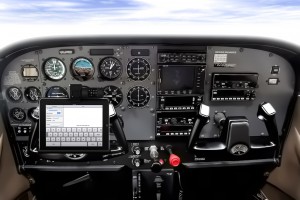The iPad – It’s an Aviation Game-Changer
02.18.11 · Greteman Group
Just more than a year ago, Steve Jobs and Apple introduced the iPad to wide acclaim and a fair amount of head-scratching. Yes, many said, it’s pretty cool, but what will anyone do with it?
One respected market analysis firm predicted that Apple would sell four million iPads in the 12 months after its April release. A few days later, it cut that prediction in half, “after watching a replay of Apple’s iPad introduction and reassessing the device’s potential.”
By the end of 2010 – in just nine months – Apple sold 12 million iPads. That number is expected to triple in 2011.
Meanwhile, it’s become clear that the device, and the clones it is inspiring, will transform many industries, including newspaper and magazine publishing.
High-Flying Applications
But it’s also been the catalyst of a quiet revolution in aviation. Always early adopters of useful new technologies, aviation professionals paid no heed to analysts and simply forged ahead finding things to do with the iPad.
Already, it has become a common flight operations supplement and, just this week, won FAA approval for use by Executive Jet Management as an alternative to paper aeronautical charts. Not as a handy complement, but as the sole source for these critical flight references.
The iPad and other similar devices are making inroads in many other aspects of aviation as well, including a growing set of applications that keep track of engine and other data for flight maintenance departments.
Check back in a year – scratch that: check back regularly and often – to see what other aviation uses are coming along.
